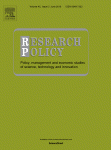
Green growth is increasingly being seen as a means of simultaneously meeting current and future climate change obligations and reducing unemployment. This paper uses detailed industry-level data from the Bureau of Labor Statistic's Green Goods and Services survey to examine how the provision of so-called green goods and services has affected various aspects of the US economy. The authors' descriptive results reveal that those states and industries that were relatively green in 2010 became even greener in 2011. To investigate further the authors include green goods and services in a production function. The results show that between 2010 and 2011 industries that have increased their share of green employment have reduced their productivity although this negative correlation was only for the manufacture of green goods and not for the supply of green services.
In the view of pressing unemployment and environmental problems, different policies have been proposed to create jobs in the transition to a green economy, including the so-called “green jobs”. There has been an intense debate on the quantification of these employment effects, especially in the European Union. Most studies have focused on estimating gross future employment effects and have ignored the effects between different sectors and countries. This paper looks, for the first time, at the past net employment impacts from the transformation of the EU energy sector including spill-over effects, by using a multi-regional input–output model and the World Input–Output Database. The analysis is focused on the period (1995–2009) when the EU’s energy structure went through a significant shift, away from the more carbon intensive sources, towards gas and renewables. The researchers estimate the net employment generated from this structural change at 530,000 jobs in the EU (0.24% of total employment in 2009), of which one third is due to trans-boundary effects within the EU (i.e. employment generated in one country due to the changes in another).
The Industrial Development Report 2013 examines the role of structural change and employment and explores the underlying drivers of structural change in manufacturing. While manufacturing employment is growing in developing countries, its decrease in developed countries is being mitigated by the rise in manufacturing-related services employment. The food and beverages and textiles and garments industries offer least developed countries tremendous potential for industrialization, whereas high-tech industries hold numerous opportunities for developed countries to invest and innovate and to thus sustain jobs. The impact of the critical drivers of structural change and industrialization—namely costs, technology, demand and resource efficiency—to sustain employment hinges on the industrial policies adopted. These must therefore be geared towards the structural transformation of the economy and will only be effective if the policy-making process plays as important a role as the policy content.


The paper examines the relationship between green innovation and employment from data taken from the Spanish Technological Innovation Panel (PITEC) for period 2007–2011. The increasing relevance of environmental issues for the Spanish economy, its unemployment problem and the uniqueness in its innovation structure make it a proper and interesting context to investigate green innovation dynamics. The authors find a positive relationship between green innovation and employment, and the relationship is stronger for firms in the so-called ‘dirty’ industries. In addition, they show that the relationship is positive for firms that introduce green innovation voluntarily, as compared to firms that introduce green innovation merely to comply with regulations. A positive and significant relationship is also found between employment and firms that report an increase in the degree of importance paid to green innovation.
